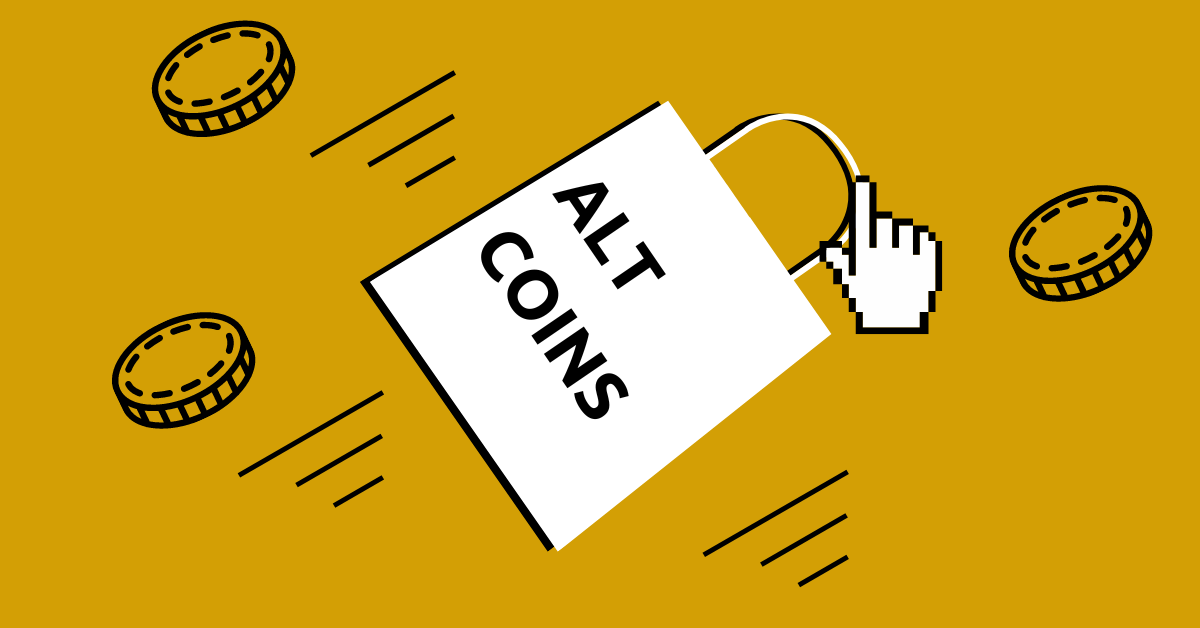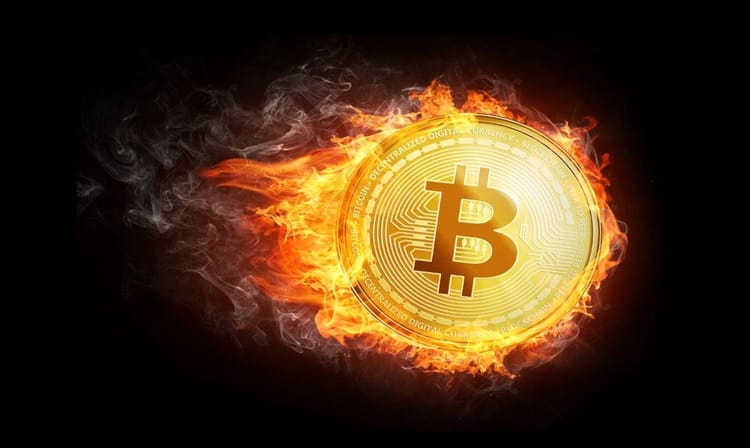Crypto Guide: Top Altcoins 5 to Watch this 2024

Traditionally, altcoins are loosely defined as all cryptocurrencies other than Bitcoin. However, its definition has evolved as the crypto industry improves technology and adopts different use cases. Today, many people consider altcoins to be a cryptocurrency other than Bitcoin and Ethereum since many cryptos are forked from one of the two. A portmanteau of "alternative" and "coins," altcoins boast different consensus mechanisms to validate their transactions, and they provide different use cases to differentiate themselves from Bitcoin.
Bitcoin and its blockchain have long dominated the crypto industry. This isn't surprising since Bitcoin is the original cryptocurrency, and its blockchain and consensus mechanism has set the standards for other crypto projects. But there's more to the crypto industry beyond Bitcoin, and all other coins that have been developed or are under development are called "altcoins."
Altcoin is a portmanteau for "alternative" and "coins," which refers to all other cryptocurrencies besides Bitcoin. Recently, people have reworked this definition to say that altcoins are, on the other hand, Bitcoin and Ethereum since many of the popular coins today are a fork of one of the two. Today, there are nearly 23,000 coins, according to CoinMarketCap, and some aren't just a medium of exchange, which means they aren't necessarily Bitcoin competitors. There may be thousands of altcoins, but not all are widely popular and highly valued.

On this page, you'll find the top 5 altcoins for 2024 listed according to their market capitalization. Also, this list doesn't include stablecoins since they're designed to maintain a stable price and don't exactly fall under the category of speculative investments. The coin's market cap is updated for this list as of April 11th.
Ethereum (ETH)
Market cap: $ 430.05B USD
Next to Bitcoin, Ethereum is the second most important crypto in the market right now, with a market cap of $430.05 bn. If Bitcoin is a decentralized currency, Ethereum is considered a decentralized global software platform powered by blockchain technology, with Ether (ETH) as its native currency. You can think of BTC as a store of value, while the Ethereum blockchain serves as a platform for developers to develop and run decentralized applications (dApps) and host smart contracts. It makes its blockchain different and more efficient because individuals can develop and run dApps and smart contracts without fraud, downtime, and interference from third parties.
Ethereum relies on the proof-of-stake mechanism to achieve a distributed agreement about the ledger's stake. Initially, the Ethereum blockchain worked using proof-of-work, but it changed its mechanism late last year to proof-of-stake (PoS). In the PoS mechanism, individuals must stake ETH into the network, which can be destroyed if they act dishonestly. Critics of the Ethereum blockchain point to its high fees in completing transactions, giving rise to other blockchains with almost the same capabilities.
Binance Coin (BNB)
Market cap: $ 90.46B USD
Binance Coin (BNB) is an exchange token used on the Binance crypto exchange. Most authority websites classify it under the Smart Contract Platform. This coin was initially launched on the Ethereum blockchain and later moved into the Binance Smart Chain, referred to as the BNB Chain. The token's primary use cases are in the Binance platform, where users can access discounts on sport, margin, and futures trading fees. These discounts range from 10 to 25%. In addition to this use case, users can be used to stake in the BNB chain and as a governance token, allowing individuals to participate in the decision-making on the platform.
The BNB Chain works on the proof-of-stake authority (PoSA), which means that the validators are limited to a small number of the largest stakers on the platform daily. In Ethereum's proof-of-stake (PoS) mechanism, each participant can only stake up to 32 ETH, meaning many stakers participate in the validation. Critics say that the BNB Chain isn't as decentralized, but this arrangement makes its system faster and cheaper.
Solana (SOL)
Market cap: 5.37B USD
Solana (SOL) is one of the most valued cryptocurrencies, with a market cap of 5.37 bn as of April 13. The Solana Foundation launched the project in March 2020, and it runs a platform that boasts high transaction speeds without sacrificing decentralization. Solana aims to improve scalability by combining the popular proof-of-stake (PoS) with the proof-of-history (PoH) consensus mechanism. The former records successful transactions and the time elapsed between them to promote trust, and the latter acts as the monitoring tool.
The Solana platform uses SOL as its native currency to pay for transactions. Solana is primarily used to create decentralized applications (dApps), similar to Ethereum's use case, focusing primarily on decentralized finance or (DeFi). It competes directly with the Ethereum blockchain in the ability to support app development, but Solana promises decreased validation times for transactions and smart contract execution. Solana's developers claim that the blockchain can process up to 50,000 transactions per second, attracting individual and institutional players.
XRP (XRP)
Market cap:$ 29.85B USD
XRP is the native digital asset used in the XRP Ledger (XRPL), an open-source decentralized technology developed by Ripple. The XRP Ledger is primarily designed to facilitate the exchange of different currency types with digital technology. This permissionless ledger provides numerous user benefits, including quick settlement times, low-cost transactions, scalability, and eco-friendliness. Its token, the XRP, is known for its speed and energy efficiency.
Initially, it was designed as a promising alternative to SWIFT (a popular money transfer network) or a platform to replace the settlement layer between financial institutions. Whenever an individual completes a transaction, the network charges a small fee, 0.00001 XRP. The ledger boasts the first decentralized exchange (DEX) and custom tokenization capabilities.
Dogecoin (DOGE)
Market cap: $ 24.74B USD
Among the top altcoins on our list, Dogecoin boasts the most interesting and exciting backstory. It's the original "meme coin" created by software engineers Billy Markus and Jackson Palmer initially as a joke in response to the crazy speculations in the crypto market. Dogecoin features the face of the Shiba Inu dog, which serves as its logo. Although it started as an inside joke, it was considered a legitimate investment by some and briefly reached a market capitalization of US$85 billion on May 5th, 2021.
As one of the most popular altcoins, Dogecoin boasts a dedicated and passionate community that consistently delivers creative memes. It's in the top 10 of altcoins by market cap simply because there are a lot of Dogecoins online. Unlike Bitcoin, which is designed to be a scarce commodity, with a maximum of 21 million BTC that can be mined, Dogecoin was created to be abundant. There are about 130 billion Dogecoin circulation, and miners can produce up to 10,000 coins per minute. Dogecoin is primarily used for tipping online, wherein social media users can tip other users to produce content.
Cardano (ADA)
Market cap: $ 17.90B USD
Cardano (ADA) is a decentralized blockchain and smart contract platform that relies on the proof-of-stake (PoS) consensus mechanism, with ADA as its native currency. It is marketed as a better alternative to blockchains that use proof-of-work (PoW). Cardano is one of the first to use the PoS consensus mechanic, promising speedy transactions and removing the energy-intensive problem-solving requirement in the blockchain that developers have come to expect from Bitcoin.
Cardano's story is closely intertwined with Ethereum, which it considers its rival. Charles Hoskinson, a co-founder of the Ethereum blockchain, launched the Cardano blockchain. Hoskinson left the project due to disagreements with Buterin on the direction of the Ethereum project, where the former wants to make it commercial, and the latter wants to become a non-profit. The Cardano blockchain was officially launched in 2015, and the first mined block was released in 2017.
Like Ethereum, Cardano's consensus mechanism rewards cryptos for work done in reviewing, confirming, and expanding the historical blockchain record. More importantly, Cardano markets itself as an updated and better version of Ethereum, with its 'third-generation credentials.' The company's ultimate goal is to provide banking services to the world's unbanked.




